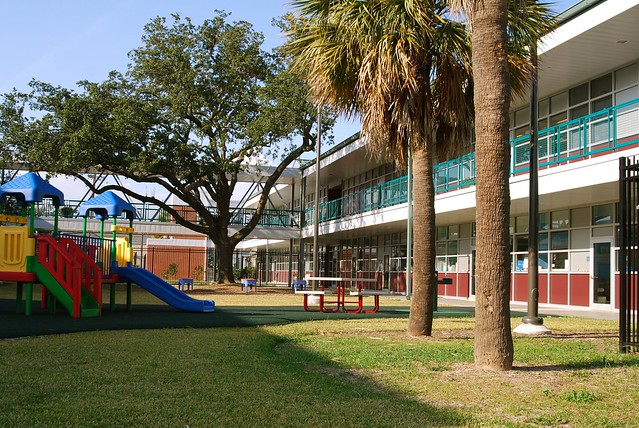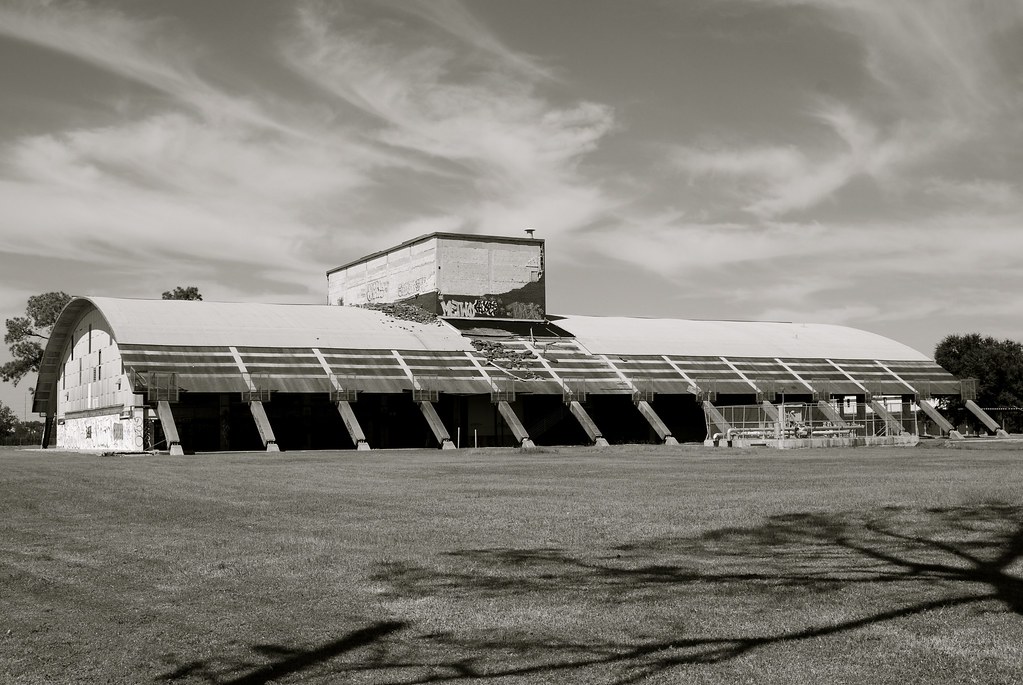
Phillis Wheatley Elmentary School, 1955, Charles R. Colbert, photo by Emily Ardoin
Regional Modernism is not just about documenting modern buildings in New Orleans, but also discovering their language of forms in relation to the environment and cultural landscape.
Back in April, I defined regionalism as a "syncretic approach to design, exhibiting a consciousness of both environmental forces and vernacular forms." A syncretic approach is one which attempts to reconcile two seemingly disparate methods. In this case, combining the purity of purpose and abstraction associated with high Modernism with the essential wisdom of our vernacular architecture's refined relationship to the environment.
New Orleans modernists were faced with relatively the same landscape and climate as their forebears - semi-tropical and surrounded by water. In Buildings of Louisiana Karen Kingsley outlines how the environment influenced the shape of our architecture.
Back in April, I defined regionalism as a "syncretic approach to design, exhibiting a consciousness of both environmental forces and vernacular forms." A syncretic approach is one which attempts to reconcile two seemingly disparate methods. In this case, combining the purity of purpose and abstraction associated with high Modernism with the essential wisdom of our vernacular architecture's refined relationship to the environment.
New Orleans modernists were faced with relatively the same landscape and climate as their forebears - semi-tropical and surrounded by water. In Buildings of Louisiana Karen Kingsley outlines how the environment influenced the shape of our architecture.
1) Raising the building off the ground not only protects from flooding, but also improving the chances of a favorable breeze on the second story with the added benefit of less mosquitos.
2) Deep galleries shade the walls, protect them from rain and provide outdoor living and sleeping space. These were also often used for circulation between rooms instead of an internal corridor.
3) Windows and doors were aligned to provide cross-ventilation.
4) High ceilings and steep roof pitches draw off heat.
5) Cypress was in abundant supply and resistant to rot and became a primary building material.
The first three characteristics are significant elements in the design of the Phillis Wheatley Elementary School: the primary structure is raised on piers, saving classrooms from flooding, deep galleries connect the classrooms and overlook interior the courtyard, and the alignment of windows and doors allows for favorable air circulation. These sustainable design strategies are shared with our most significant historic homes including Madame John's Legacy (1795) and the Pitot House (1799). Yet the spirit of the Phillis Wheatley structure is thoroughly modern as evidenced by its cantilevered steel trusses, transparent skin and bold concrete piers.

